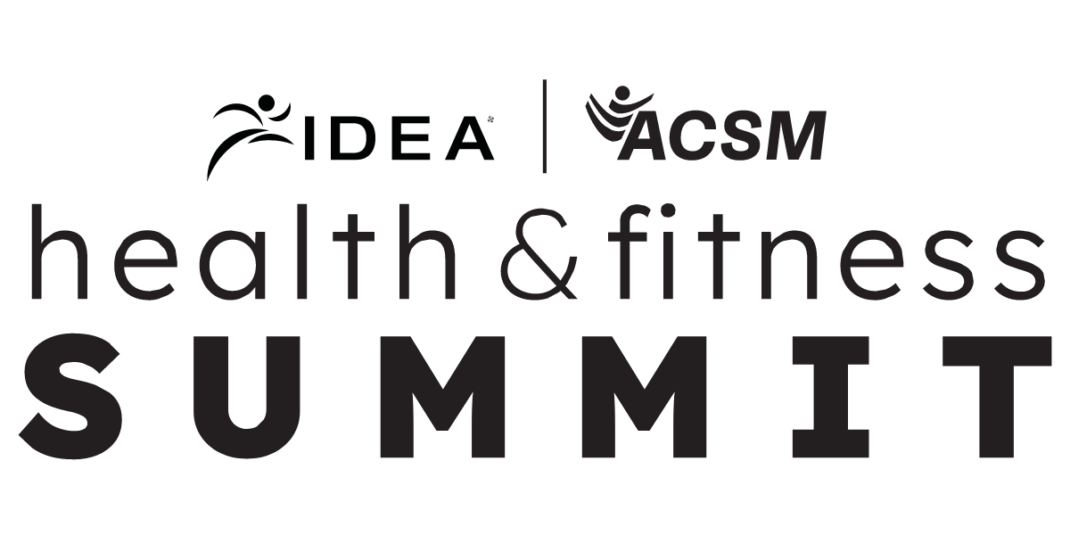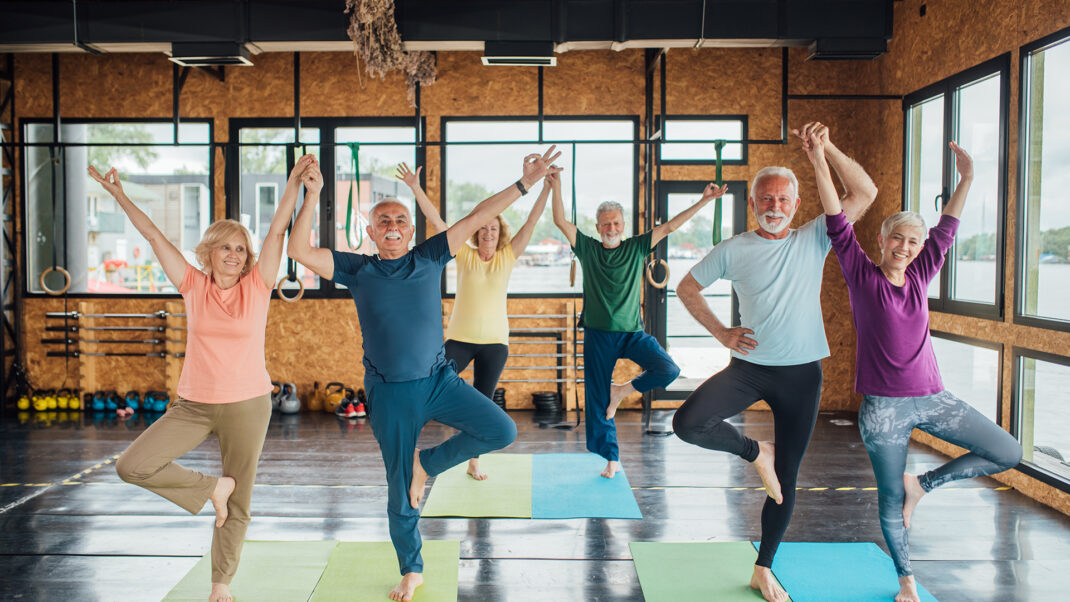Successful Cuing for Pilates
How often have you given a Pilates cue and had a client respond, “Oh, now it makes sense!” or “Wow, that feels totally different!” or of course my favorite, “No one has ever told me that!” A well-directed Pilates cue that hits the mark can bring about a change immediately. In many cases the client has been taught the move before and has been corrected many times, but hasn’t grasped the point. Now it is clear–and that is the magic of cuing: At one particular moment, the client is ready to receive a particular cue, of a particular type . . . and bang, it happens, with the magnitude of an epiphany!
For fitness professionals, cuing is the essence of all teaching, whether the activity is weightlifting or yoga, step or Pilates. A good cue changes more than an exercise experience; it also changes the client’s outlook. An unconvinced potential client suddenly becomes an ardent devotee.
Yes, of course, mastering the skill in question is important. I spent the first 10-15 years of my Pilates career learning and practicing the entire repertoire of Pilates exercises from fundamental to master level, integrating the movements into my body and becoming one with this mind-body system. But experience in a discipline–while crucial–is not enough; a good Pilates teacher must also be able to communicate effectively. Think of Pilates teachers you have had over the years. . . . Isn’t it the case that the gifted ones knew how to communicate their intentions clearly, whereas others fell far short of their goals, simply because they did not possess this ability?
These days, I continue to practice Pilates with great discipline, but in the last 10 years I have focused more and more on honing my teaching skills, particularly my Pilates cuing. In the final analysis, the one ingredient that can become better with time and maturity is cuing. Our bodies age, and even with diligent practice some physical deterioration is inevitable. But like a fine wine, our teaching can improve over time.
The Art of Pilates Cuing
Developing skilled Pilates cuing doesn’t happen overnight. The art of cuing is a complex process based on experience, experimentation, understanding and intuition. Perhaps this is especially true of a mind-body discipline such as Pilates. Sometimes the learning is highly cognitive, and other times, information must be conveyed, received and integrated in milliseconds. As awareness develops and the process of fine tuning and correction becomes almost subconscious, the time delay between a cue and the correction can be very short indeed.
To facilitate this process, it helps to know what kind of learner a client is. Most people lean toward a preferred type of learning. They may be primarily visual learners, auditory learners, experiential learners or tactile learners (although no one belongs exclusively to one group). Choosing the best type of Pilates cue for a client in a given situation speeds progress and makes the experience more fulfilling for both client and teacher.
The Four Types of Pilates Cuing
The following four types of Pilates cuing relate directly to the different ways in which clients learn best.
Visual Pilates Cuing
Visual learners like to see a demonstration.
Offer a visual example of the Pilates exercise or of the point that’s being addressed. Execute an accurate and well-practiced demonstration of the movement. Your aim is to be a role model of what the movement embodies on every level. This is a good reason to continuously practice the work and stay connected with the movements physically, mentally and viscerally.
Auditory Pilates Cuing
Auditory learners like an explanation, which might be analytical or figurative (imagery).
Give a verbal explanation of the Pilates exercise or of the point that’s being addressed. Develop ways to articulate the movements verbally. If the verbal cuing is based on the analytical approach, be sure the information is scientifically sound and the analysis clear. First define the muscle focus of the Pilates exercise. Next determine the objectives. Only then can the cues be articulated and implemented with clarity and direction. Movement analysis is in fact one of the fundamental pillars that uphold succinct Pilates cuing and successful teaching in general.
If the Pilates cuing is based on the figurative approach, be sure the images make sense to the client. Imagery can be a very powerful tool when used skillfully, and most people respond well to this approach. An image creates a shortcut in the learning process, sometimes conveying in a sentence what would otherwise take a long time to explain.
Yet, inappropriate imagery can be counterproductive (even when given with the best of intentions). Images that are not scientifically sound can sometimes create confusion. For instance, many a dancer has heard the cue, “Lift the leg from the back”. This image is intended to create an effortless, elongated movement. However, surely no one would dispute that the leg is not lifted forward with the hamstrings. The point here is that imagery can be based on concept or science–and both are legitimate–but a clear distinction should be drawn between the two to eliminate misunderstandings.
Experiential Pilates Cuing
Experiential learners like to do the Pilates exercise immediately.
Step back and let the process “happen.” Allow the client to experience the Pilates movement or the point in discussion. Rather than bombard the client with corrections right away, allow a movement experience to take place. Once your client has achieved a basic understanding of the exercise, corrections and directives can follow, within reason.
Tactile Pilates Cuing
Tactile learners prefer touch from the Pilates teacher to sense the work.
Because touch is so direct and time efficient, tactile cuing is possibly the most valuable of all the cuing methods in teaching Pilates. However, owing to the nature of touch and its many possible implications and misinterpretations, great care should be taken when using this mode of cuing. (Note that in some U.S. states, the use of hands-on techniques requires licensing.) Prior to using tactile cuing with a client, it can serve well to mention its effectiveness in teaching Pilates and ask permission to use it. When using touch, be professional, deliberate and confident. If, however, the client is uncomfortable with touch, choose other Pilates cuing methods.
Skillful, Focused Teaching
Ultimately, the effectiveness of your Pilates cuing will determine the effectiveness of your teaching. No one is just a visual learner or just a tactile learner. In the best-case scenario, you will be well versed and competent in all modes of cuing and able to combine them in subtle ways for the best effect. To achieve this level of skill as a Pilates teacher, you need to practice the work, integrate it into your life and gain experience in teaching the movements. Over time, you will become comfortable with using various cuing options and skillful in selecting the optimum tool for a particular task. As you gain more experience in all facets of the process, your cuing will become increasingly focused and in turn more effective.*
Sidebar: Seven Steps to Successful Pilates Cuing
Establishing sound cuing techniques for Pilates involves learning, practicing, experiencing, observing and tapping into one’s intuition; a vital part of the process. Following are seven steps that contribute to effective Pilates cuing:
- Learn, practice and understand the Pilates exercise on every level (including anatomical, biomechanical and visceral).
- Test and develop a wide array of Pilates cuing options.
- Become familiar with the client’s proficiency level, capability, restrictions and injuries.
- Set goals and objectives for teaching the Pilates exercise (these may differ from client to client).
- Observe how the client executes the Pilates movement.
- Know (or sense) what type of cue the client will respond to best in a given situation.
- Give the cue.
Sidebar: Four Pilates Exercises Showing Different Cuing Options
Knee Stretch Round Back
Pilates Cuing Method: tactile
The most difficult aspect of this Pilates exercise to master is keeping the trunk (including the pelvis) still as the legs move freely forward and backward. I find tactile cuing the most successful approach.
Place one hand firmly on the sacral area of the lower back/pelvis and the other hand on the lower abdominal/pubic symphasis area. Essentially, create a clamp for the pelvis to help keep it still. Note: As with all tactile cuing, but particularly when touching the pelvic region, the touch must be professional and confident; in addition, a trusting and comfortable relationship must already exist with the client. Each individual who uses tactile cuing has the responsibility to follow professional guidelines at all times.
Short Spine
Pilates Cuing Method: verbal (analytical)
The Short Spine is a complicated Pilates exercise requiring a high level of coordination and control. Because the body is in an inverted position most of the time, with the feet in the straps, this movement is difficult to demonstrate (the client would need to remove the straps and get off the Reformer, allowing you to get onto the Reformer and place your feet in the straps, followed by you getting off the Reformer and the client back on . . . very time consuming). I find that the most efficient form of cuing for this Pilates exercise is verbal.
Describe the movement as the person goes through it. Make the directives simple and to the point. It is easier if you break the move down into short segments that are coordinated with the breath pattern:
Inhale: Bring the legs overhead.
Exhale: Roll up onto the shoulders.
Inhale: Bend the knees to a frog position.
Exhale: Articulate the spine down, keeping the feet over the face.
Inhale: Flex the feet, draw the sacrum down and return to the starting position.
Roll-Over
Pilates Cuing Method: demonstration
I am very specific about the unique execution of this Pilates exercise, and I find that the best way to convey the correct action is through demonstration. No matter how much explaining I do, the point is often missed.
Emphasize this key point: On the way over, the movement must be created by flexion of the trunk, with the hip joint remaining at approximately a 90-degree angle. This eliminates the tendency to use the legs as a long lever arm to create momentum. However, on the return, emphasize the stretch by keeping the thighs as close to the chest as possible. In this case, a picture is worth a thousand words!
Swan on the Step Barrel (Spine Corrector)
Pilates Cuing Method: verbal (imagery)
Recruiting different parts of the back requires intricate control and body awareness. I find verbal cuing using imagery (coupled with tactile cuing when specific muscles must be accessed) the best way to recruit the back with the necessary control and awareness.
In the case of the Swan on the Step Barrel, look for intravertebral control of the back extensors. Initially ask the client to reach out from the crown of the head. This immediately elongates the spine. Following that, ask for a reverse spinal articulation, moving from the head down the spine to the mid back. This completes the first phase. In the second phase, the lower back and hip extensors are recruited as the legs lift. Now suggest the shape and feel of an archer’s bow. This provides the image of a consistent and powerful arc through the body.
Rael Isacowitz, MA, dancer, athlete, yogi and founder of Body Arts and Science International™ Pilates education, has been teaching for three decades. He is internationally recognized as an expert in Pilates with over 25 years’ experience in the method. Rael has released a professional DVD series, in addition to having published an extensive compilation of Movement Analysis Work Books covering mat work and all other Pilates apparatus. For more information please visit www.BASIpilates.com.





